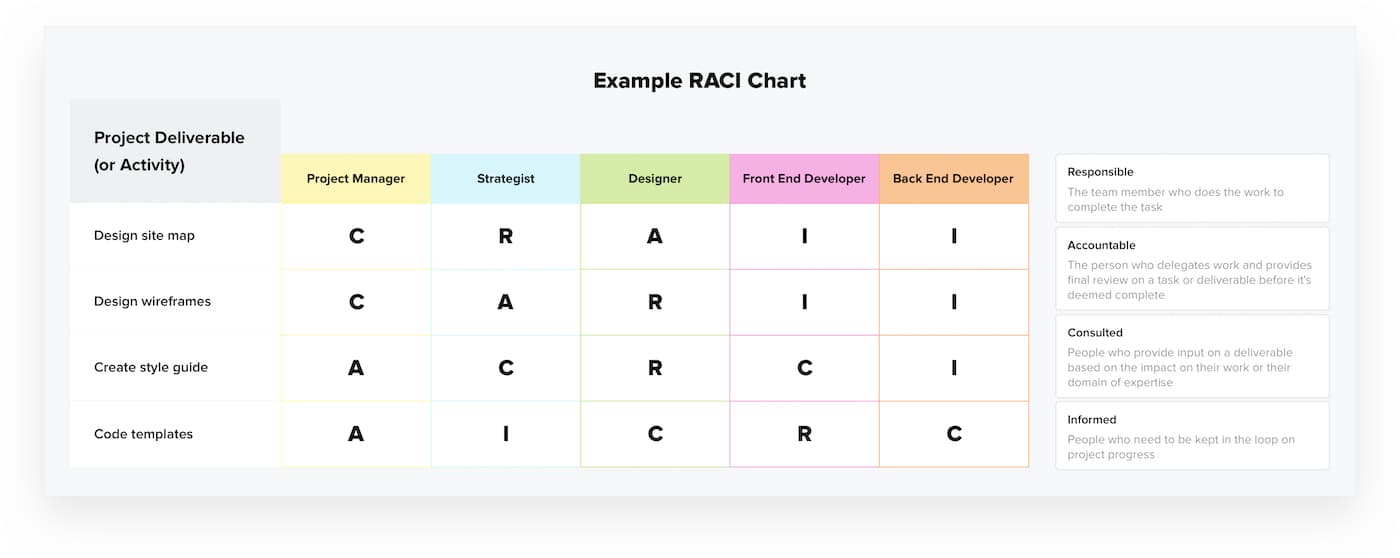Like any collaborative process, content feedback is essential to content creation. No matter who you ask, nothing good is created in a vacuum; when you work together to create something, whether a blog, a podcast, a report, or a sales proposal, the result is almost always better. Why? Collaborative content benefits from diverse viewpoints, specialized skills, and collective creativity, resulting in higher quality, well-rounded, more accurate, innovative, and engaging material.
The power of content feedback
Effective feedback is crucial for enhancing the quality and refinement of content. It provides valuable insights and perspectives to the creator, enabling them to make informed adjustments and improvements. However, as any content marketer or designer will tell you, the feedback process can often be disorganized and delay or completely derail a project.
Disorganized feedback can lead to confusion, misinterpretation, and frustration. It hampers the content refinement process by lacking clarity, specific, actionable points, or a structured approach, making it difficult for creators to address and implement improvements effectively. Not to mention, depending on the size of the project and the stakeholders involved, each feedback round is costly.
Discover: Avoid Chaos With a Content Creation Workflow
Constructive feedback is a crucial component of creating content. Different stakeholders hold different opinions, and their insights into certain aspects of the project are valuable. Still, disorganized feedback also holds the power to derail the project entirely if not handled correctly.
Imagine you, a content marketer eager to gather comprehensive feedback, decide to involve various stakeholders when creating the latest report— a product manager, your designer, a sales representative, and a senior VP. In a quick email thread, each stakeholder is encouraged to share their thoughts on the campaign materials.
However, with unique perspectives and priorities, you soon receive various opinions and suggestions, some via Slack, others in an email thread, and some verbally. Pretty soon, you’re trying to make sense of a maze of conflicting suggestions, attempting to discern a clear direction.
As you try to consolidate the feedback, the project timeline starts slipping. Decisions become delayed due to the need for extensive discussions and debates to align everyone's viewpoints. Initially scheduled for a timely launch, the project faces delays and increased stress.
In this scenario, while the intention to involve many stakeholders was well-intentioned, the lack of a structured process led to confusion, conflicting opinions, and, ultimately, costly project delays. It highlights the importance of carefully managing and structuring the project. When you clearly define when and where to provide feedback, you can maintain project timelines and ensure a cohesive and effective content marketing strategy.
Enhancing content quality and avoiding chaos with RACI
As we’ve seen, feedback can essentially make or break your content. Effective feedback is specific, provides clarity, and holds actionable suggestions. However, you must embed a smooth process to benefit from content feedback. There are many project management tools and frameworks you can try. For us, the RACI model helps to define roles and responsibilities for various tasks and activities within a project.
If you’re unfamiliar, the acronym RACI stands for;
Responsible (R): These individuals or roles are responsible for executing a task or activity. They are the "doers" and are directly involved in the action.
Accountable (A): The person or role ultimately accountable for the task's completion. They ensure the task is carried out effectively and take ownership of the outcome.
Consulted (C): These individuals or roles provide input and are consulted for their expertise or feedback during a task's execution. Their insights are valuable for decision-making.
Informed (I): These are the individuals or roles who are kept informed about the progress or completion of a task. They need to know the task's status but are not directly involved in its execution.
 Source: TeamGantt
Source: TeamGantt
In the context of content production, the RACI model can enhance the content creation process as follows:
- Clarity in roles and responsibilities:
By assigning RACI roles to each task or step in the content production process, there's clarity about who is responsible for what, who needs to be consulted, who is accountable for the overall outcome, and who needs to be informed.
- Efficient workflow & effective collaboration
Understanding the RACI roles helps streamline the workflow by ensuring that tasks progress smoothly from one stage to another. Each individual knows their responsibilities and when to take action. It ensures that the right individuals are involved in decision-making processes, improving the quality of the content.
- Accountability and ownership:
The "Accountable" role ensures that there's someone responsible for the overall content quality and success. This accountability promotes a sense of ownership and ensures that tasks are completed effectively.
- Improved communication:
Identifying who needs to be informed or consulted ensures that communication channels are clear and that necessary parties are kept in the loop about progress, changes, or updates in the content production process.
- Efficient time management:
RACI helps optimize time management by preventing bottlenecks or delays caused by uncertainties about roles and responsibilities. Tasks can be executed efficiently, keeping the project on schedule.
Overall, leveraging frameworks like the RACI model is a great way to avoid collaboration chaos. Implementing a structured process enhances the workflow, clarifies roles and responsibilities, improves accountability, and ensures effective communication. All of which ultimately contribute to a smooth and efficient content production process.
Still curious? Check out our 5 Best Practices to Bring You Up to Speed With Content Operations.
Final thoughts
In a nutshell, feedback is the cornerstone of content refinement. A well-structured feedback approach not only refines content but also translates to cost savings for your company.
On the other hand, a dysregulated feedback process can derail your project entirely and negatively affect your bottom line. By leveraging a framework where your stakeholders know their roles and responsibilities, you can ensure your team is aligned, and your content is delivered on time.

